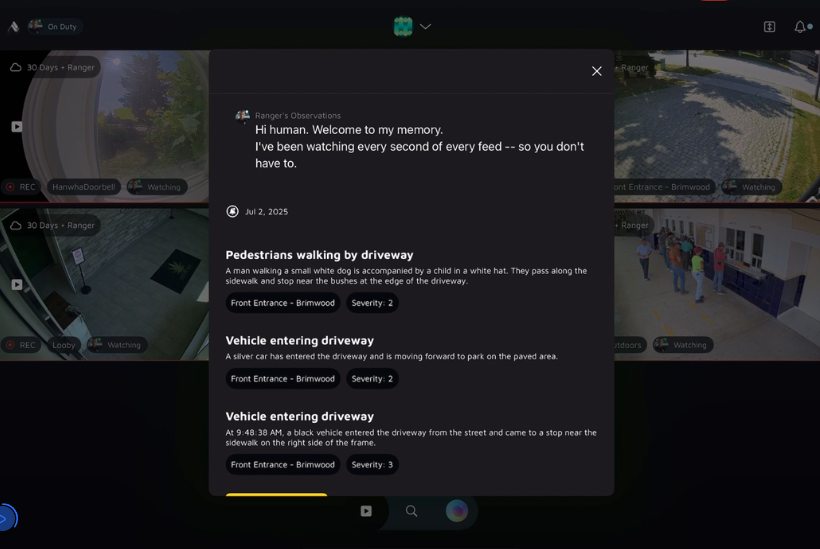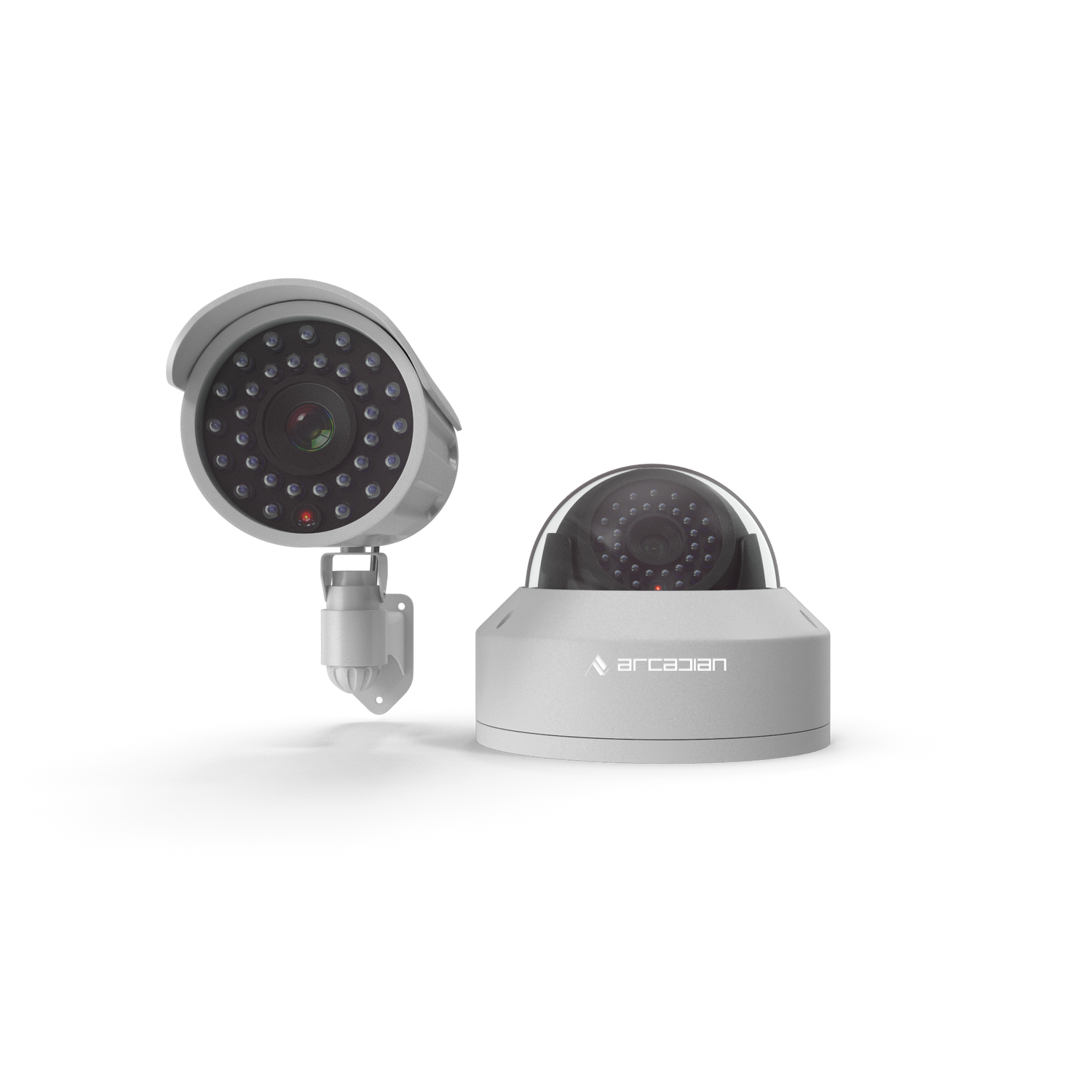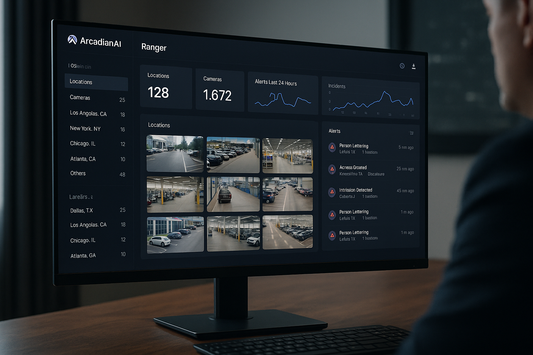Top Surveillance Camera Brands in North America: A 2025 Comparison With a Smarter Alternative
From Axis to FLIR, today’s camera giants offer a range of features—but are they truly future-ready? Let’s explore the top brands, their pros and cons, and why ArcadianAI changes the game.

Introduction
What do Axis, Hanwha, and FLIR have in common?
They dominate the physical security industry—but not because they’re the most flexible. In fact, the 2025 camera market has become saturated with hardware-first ecosystems that limit innovation, interoperability, and AI-powered outcomes.
As security threats become more sophisticated, so must our technology. Businesses are now asking: Is the camera itself still the smartest part of the system? Or is it time to let intelligent platforms—not just lenses—lead the way?
This comprehensive guide compares the biggest surveillance camera brands in North America and presents a camera-agnostic, AI-first alternative: ArcadianAI. With over 3,000 supported models and real-time semantic analysis via its AI assistant Ranger, ArcadianAI unshackles customers from outdated NVRs, brand lock-in, and basic motion alerts.
Whether you're a security professional, systems integrator, or business owner, this post gives you the insight needed to choose better in 2025 and beyond.
Quick Summary / Key Takeaways
-
Axis, Hanwha, FLIR, and Avigilon are top-tier camera brands—but often come with proprietary lock-ins.
-
NDAA compliance, ONVIF support, cybersecurity, and AI-readiness are critical buying factors in 2025.
-
Many popular cameras offer great video—but limited intelligence without add-on analytics.
-
ArcadianAI supports over 3,000 camera models and lets customers keep their existing hardware.
-
ArcadianAI’s Ranger AI turns any camera into a smart surveillance system with real-time alerts and forensic insight.
Background & Relevance
Video surveillance is no longer about recording—it’s about real-time awareness, data extraction, and proactive intervention. The global video surveillance market was valued at $52.5 billion in 2023 and is expected to reach $83.3 billion by 2028, growing at a CAGR of 9.6% (Source: MarketsandMarkets).
Yet most brands still sell based on resolution and hardware durability. Meanwhile, security teams struggle with:
-
False alarms: Over 90% of alerts are irrelevant motion events.
-
Storage overload: NVRs often fail or become storage bottlenecks.
-
Lack of AI: Intelligence lives in separate boxes or expensive add-ons.
-
Brand lock-in: Customers are stuck with one ecosystem even when better options exist.
In this context, understanding camera brand differences—and their compatibility with cloud-native platforms like ArcadianAI—has become critical.
Brand-by-Brand Comparison
Axis Communications
Origin: Sweden
NDAA Compliant: Yes
ONVIF Support: Full
Best Known For: Innovation, reliability, early PoE adoption
Axis is widely regarded as the pioneer of IP surveillance. With robust firmware, cybersecurity practices, and industrial-grade builds, Axis remains a top-tier option for enterprise clients.
Strengths
-
NDAA-compliant and trusted for government use
-
Durable hardware with wide lens and sensor options
-
Comprehensive VMS integration (Axis Camera Station)
Weaknesses
-
Premium pricing
-
Vendor lock-in if paired with Axis software
-
AI analytics require separate licensing
External Link: Axis Official Site
Hanwha Vision (formerly Hanwha Techwin / Samsung)
Origin: South Korea
NDAA Compliant: Yes
ONVIF Support: Yes
Best Known For: High image quality, affordability at scale
Hanwha (Wisenet series) is popular among integrators for offering balance: reliable gear at competitive pricing. Its newer P-series models include analytics and high-resolution optics.
Strengths
-
Strong image performance, even in low light
-
Competitive pricing across product lines
-
Active cybersecurity certifications
Weaknesses
-
Software UX lags behind competitors
-
Some smart features are locked behind proprietary systems
-
Integration flexibility limited outside its own NVR ecosystem
FLIR (Now part of Teledyne Technologies)
Origin: USA
NDAA Compliant: Yes
ONVIF Support: Yes
Best Known For: Thermal imaging and critical infrastructure surveillance
FLIR dominates in government, military, and utility sectors with its high-performance thermal and visible spectrum cameras.
Strengths
-
Unmatched thermal optics
-
Strong integrations with VMS and command centers
-
NDAA-compliant models widely available
Weaknesses
-
Expensive, niche-oriented
-
Not ideal for general-purpose security
-
Limited smart analytics unless paired with third-party AI
Avigilon (Motorola Solutions)
Origin: Canada / USA
NDAA Compliant: Yes
ONVIF Support: Partial
Best Known For: End-to-end security systems with AI
Avigilon sells both cameras and its own Video Management Software (Avigilon Unity). It's a full-stack ecosystem that tightly integrates hardware, analytics, and storage.
Strengths
-
Advanced analytics (e.g., Appearance Search, License Plate Recognition)
-
High reliability and support
-
Works well in enterprise or campus-wide deployments
Weaknesses
-
Closed ecosystem; hard to mix and match
-
Expensive long-term due to software licensing
-
Storage-heavy deployments unless paired with their cloud option
Bosch Security Systems
Origin: Germany
NDAA Compliant: Yes
ONVIF Support: Yes
Best Known For: Professional-grade build, intelligent video analytics
Bosch has focused heavily on “Intelligent Video Analytics” (IVA) embedded in cameras, making it a leader in edge AI. Strong performer in commercial and government spaces.
Strengths
-
Smart motion detection and object tracking
-
Well-suited for transportation and perimeter defense
-
Reliable firmware and NDAA compliance
Weaknesses
-
Higher cost and complexity
-
Interface less intuitive for small businesses
-
Limited ecosystem integrations without Bosch VMS
Uniview (Uniview Technologies)
Origin: China
NDAA Compliant: No
ONVIF Support: Yes
Best Known For: Affordable alternative to Dahua/Hikvision
Uniview is often chosen for price-sensitive deployments. While not NDAA compliant, it's used in private facilities and international markets.
Strengths
-
Affordable pricing and good feature set
-
Easy interface, mobile-friendly
-
Suitable for small retail or residential setups
Weaknesses
-
Not NDAA compliant; banned in federal/government use
-
Firmware concerns, especially cybersecurity
-
Limited analytics without third-party software
Lorex (owned by Dahua)
Origin: China
NDAA Compliant: No
ONVIF Support: Partial
Best Known For: DIY and retail consumer kits
Lorex is a household name in consumer security but often lacks professional-grade reliability or support.
Strengths
-
Budget-friendly
-
Sold at Costco, Amazon, Best Buy
-
Easy for residential use
Weaknesses
-
Not NDAA compliant
-
Very limited analytics or business-grade tools
-
Firmware and cybersecurity risks
Table: 2025 Brand Comparison Summary
| Brand | NDAA | ONVIF | AI Analytics | Price Tier | Ecosystem Lock-In | ArcadianAI Compatible |
|---|---|---|---|---|---|---|
| Axis | ✅ | ✅ | Add-on | $$$ | Moderate | ✅ |
| Hanwha | ✅ | ✅ | Some | $$ | Moderate | ✅ |
| FLIR | ✅ | ✅ | Third-party | $$$$ | Low | ✅ |
| Avigilon | ✅ | Partial | Built-in | $$$ | High | ✅ |
| Bosch | ✅ | ✅ | Strong | $$$ | Medium | ✅ |
| Uniview | ❌ | ✅ | Limited | $ | Low | ✅ (with caution) |
| Lorex | ❌ | Partial | None | $ | High | ⚠️ Limited |
How ArcadianAI Works With Any Camera
ArcadianAI is camera-agnostic. That means we don’t care if your camera is from Axis, Hanwha, or a 10-year-old Lorex model. If it streams video, we can analyze it.
✅ Supports 3,000+ camera models
✅ Works with ONVIF, RTSP, HLS, MJPEG
✅ Real-time AI detection, no NVR needed
✅ Built-in forensic search and business analytics
You get the benefit of advanced intelligence—object detection, loitering alerts, queue monitoring, intrusion detection—without having to upgrade your cameras or sign a long-term license deal with a camera brand.
That’s freedom. That’s ArcadianAI.
[IMAGE: ArcadianAI dashboard displaying alerts from different camera brands – realistic, 16:9 – alt="ArcadianAI platform showing alerts from Axis, Hanwha, and Lorex cameras"]
Common Questions (FAQ)
Q: Can I use ArcadianAI if I already have Avigilon or Hanwha cameras?
Yes. ArcadianAI is fully compatible with existing deployments—even closed ecosystems like Avigilon—via RTSP or ONVIF stream access.
Q: Will switching to ArcadianAI mean I lose my existing NVR recordings?
No. You can run ArcadianAI alongside your existing NVR system or gradually phase out local storage in favor of our cloud-native infrastructure.
Q: Are Chinese brands like Hikvision and Dahua supported?
Technically yes, but we flag them due to NDAA and cybersecurity concerns. We recommend NDAA-compliant alternatives like Axis or Hanwha when possible.
Q: Does ArcadianAI require new hardware?
Not at all. That’s the point. We bring intelligence to your existing cameras—and we’re happy to help with installation or remote onboarding.
Conclusion & CTA
Every camera brand has its strengths. Axis excels at quality. Hanwha wins on value. FLIR owns thermal. But no single brand does it all—and none offer truly unbiased, cross-platform intelligence.
ArcadianAI breaks the brand barrier.
With support for thousands of models, real-time alerts, and zero reliance on motion-based detection, our platform delivers clarity, not noise. You can finally reduce false alarms, boost operational efficiency, and unlock the power of video—without being locked into a vendor.
✅ Smarter alerts
✅ Lower costs
✅ Works with what you already have
Ready to upgrade your surveillance without replacing your cameras?

Security is like insurance—until you need it, you don’t think about it.
But when something goes wrong? Break-ins, theft, liability claims—suddenly, it’s all you think about.
ArcadianAI upgrades your security to the AI era—no new hardware, no sky-high costs, just smart protection that works.
→ Stop security incidents before they happen
→ Cut security costs without cutting corners
→ Run your business without the worry
Because the best security isn’t reactive—it’s proactive.







